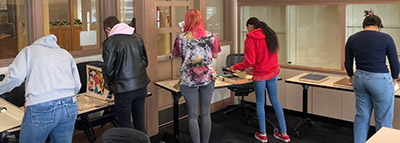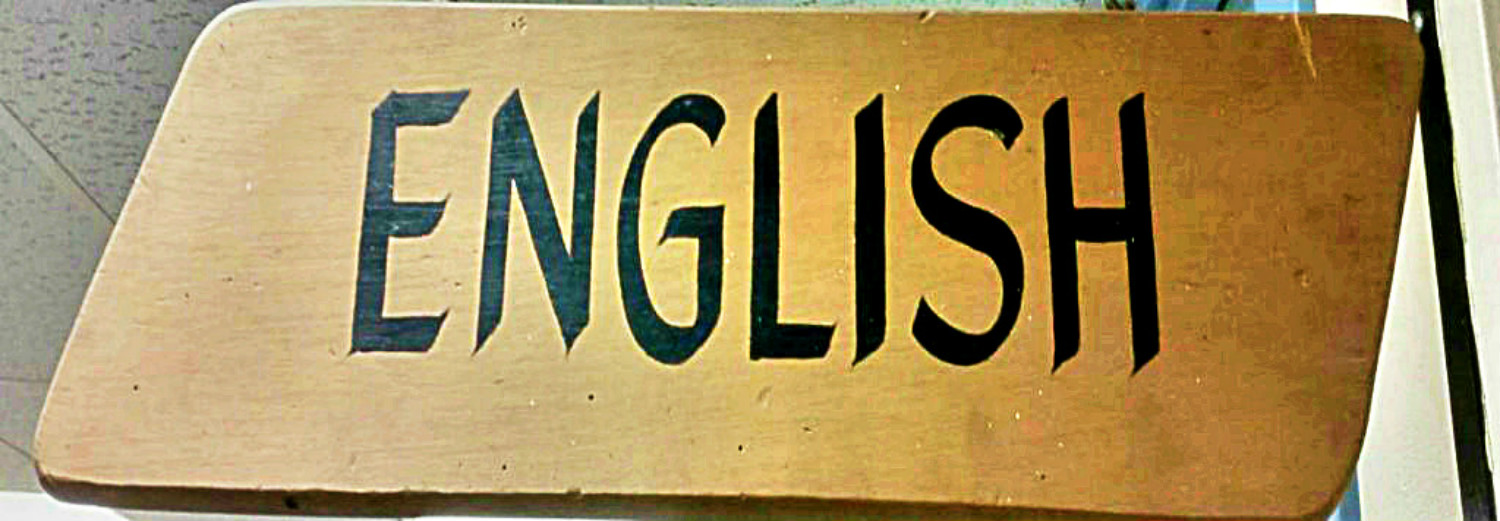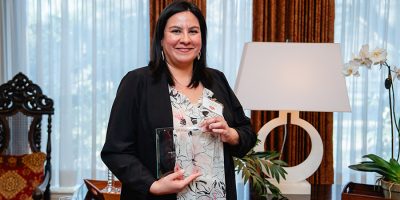Jessie Bonafede, who is completing her PhD in Medieval Studies, made it a priority to feature the Center for Southwest Research and Special Collections in her classes as an experiential learning opportunity for her students in both English 2630: British Literature I, and English 2650: World Literature I.
Bonafede scheduled a visit to CSWR for her Early World Literature class and worked directly with Institute Director, Tomas Jaehn (who is now retired), in the Water’s room at Zimmerman to showcase many examples of early examples of writing, including the center’s 16th century facsimile productions of Mesoamerican codices and other documents concerning Albuquerque and New Mexico. In Fall of 2022, Bonafede had the pleasure of working with archivist Jolene Manus to prepare a visit for her Early British Literature students. [photo of Water’s Room]

Bonafede mentioned that, “It is important to me that students of literature experience these early texts as living cultural artifacts. Much of what we do in the field of early literatures exposes us and encourages us to work within disciplines and with methodologies concerning history, archeology, paleography, and illustration, as well as developing traditions in writing and publishing. By visiting the Special Collections, talking with the archivists, and handling the original and facsimile productions, students can move away from the big-name publisher’s anthologies or online open access resources and jump into the physical space and world of these historical items. I am delighted to see how these visits open up students’ perspectives on approaching these texts and all the various skills involved in their discovery, study, and preservation, many of which students apply in other aspects of their lives.” [photo of students in Water’s Room]

Below are a few excerpts from students who’ve taken Bonafede’s sections of Early World Literature and British Literature I who were eager to share their experiences and photos from the visits to Special Collections.
Sofia Garcia, English 2650, Spring 2022: “During our class’s visit to the Special Collections, I was excited to look through different types of world literature. I was able to see for myself how different cultures expressed their history through several forms of literature. My favorite one in particular was the Mexica (Aztec) Codex, which was a singular strip of paper that had been folded to create what looked more like a booklet. This interested me because it is a part of my culture and I have always been interested in learning more about it. Because of this class trip I learned more about the Mexica people’s pilgrimages and the reasons for taking these lengthy journeys; even one that lead to the discovery of Tenochtitlan. This codex was not the one I saw in our visit to the Special Collections, but it led to me do further research on this important part of history.”
Danielle Genero, English 2650, Spring 2022: “Using the CSWR in class was an incredibly eye-opening experience to just how many resources we have available at UNM. I always just assumed old, delicate texts were shut off in museums where only a handful of people would have access to them but being able to visit the CSWR and the special collections showed me otherwise and felt like a once in a lifetime experience. I was practically vibrating with excitement to be able to interact with the texts and was surprised at how easy it was to gain access to them. It made me feel like a real scholar.” [photo of Danielle Genero]

Gareth Miller, English 2630, Fall 2022: “The Special Collections visit was a wealth of literature knowledge. As much as I enjoyed the artifacts, I enjoyed the presenter and her knowledge of other experts in the field of medievalism. I find that people enjoy talking about their areas of expertise and do so with great passion. I am curious from a scientific perspective in regard to the parchment and vellum that were used to create these medieval works of art.
1. Do the plants and animals that made these works still inhabit the heart?
2. If not, can one get DNA from these texts and clone the perished organism?
3. Was human skin used to create book bindings?
4. Does the state of New Mexico have any more medieval archives?
5. Could the English Department at UNM come up with a trip to the UK for students who want to do field research over the summer or winter breaks?” [Gareth’s photos 1 & 2]
Arwen Lynch-Poe, English 2630, Fall 2022: “The thing I found most fascinating about our visit was the availability of resources. It is one thing to read about Queen Elizabeth I’s privy seal. It is another thing to actually be able to see the actual item. When I heard that was a part of what we were going to see, I knew the seal was the first thing I would see.
For me, a true history geek who thinks any historical road sign is a mandatory stop, I could imagine the hand of the Queen Herself holding this seal. In my mind’s eye, I had always seen the seal as looking more like a wax stamp with a handle. But seeing this seal and then researching privy seals, I learned that they had two sides so a handle really wasn’t something that could have been employed.
Of course, seeing one of Good Queen Bess’s seals in Albuquerque, NM, brought up an inevitable question for me. How did it get here? Did the Conquistadors bring it? Unlikely. Did some British ex-pat happen to have a traceable genealogical connection to Gloriana? Unlikely again given her presumed virginal status. So how did this piece so richly invested in the history of England make it to southwest America?
This has me so puzzled that I may see if I can track it backwards. Paper? Maybe. But I have so many paper ideas floating around in my head right now. Like Elizabeth I, I can’t commit. But I definitely can commit to going back to see what else is in the library et al. I think Elizabeth I would have given me her seal of approval.” [Photo of Queen EI Seal]
Jessie expressed great satisfaction when describing students’ experiences working with the documents, including how students were able to read much of the documents’ content that were in Spanish and early modern English. She is grateful for the work the archivists do at the Special Collections and the passion they exert for student growth and learning.




